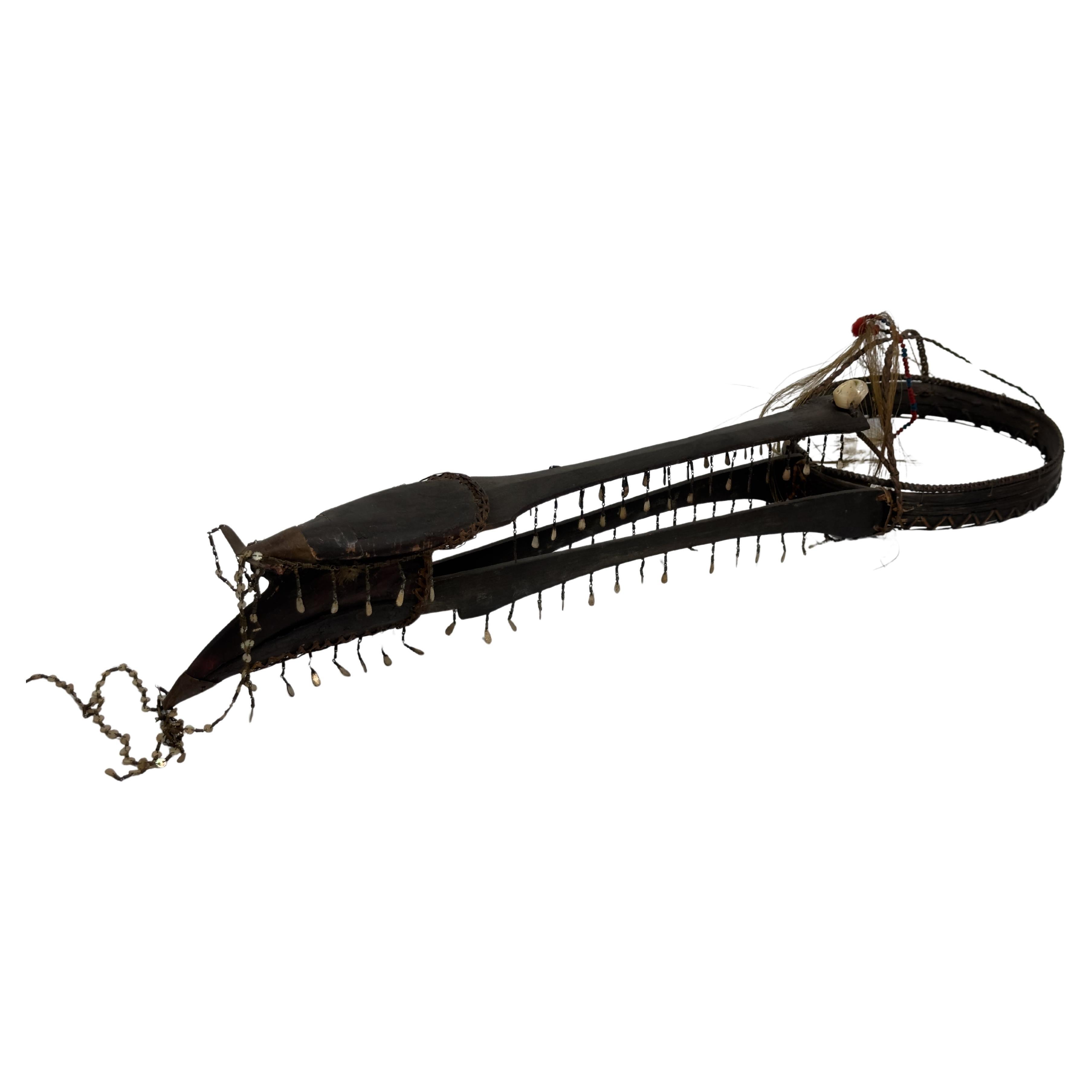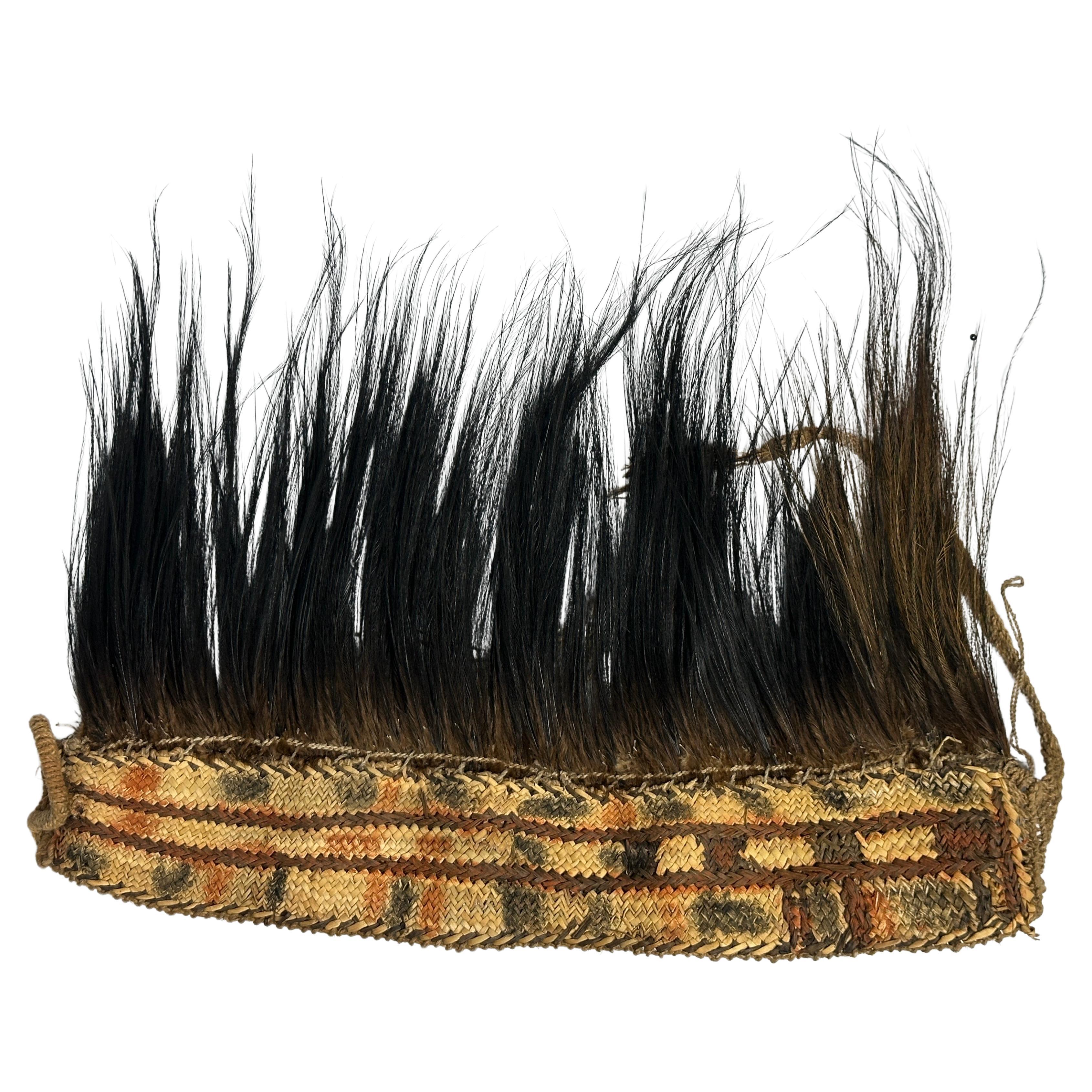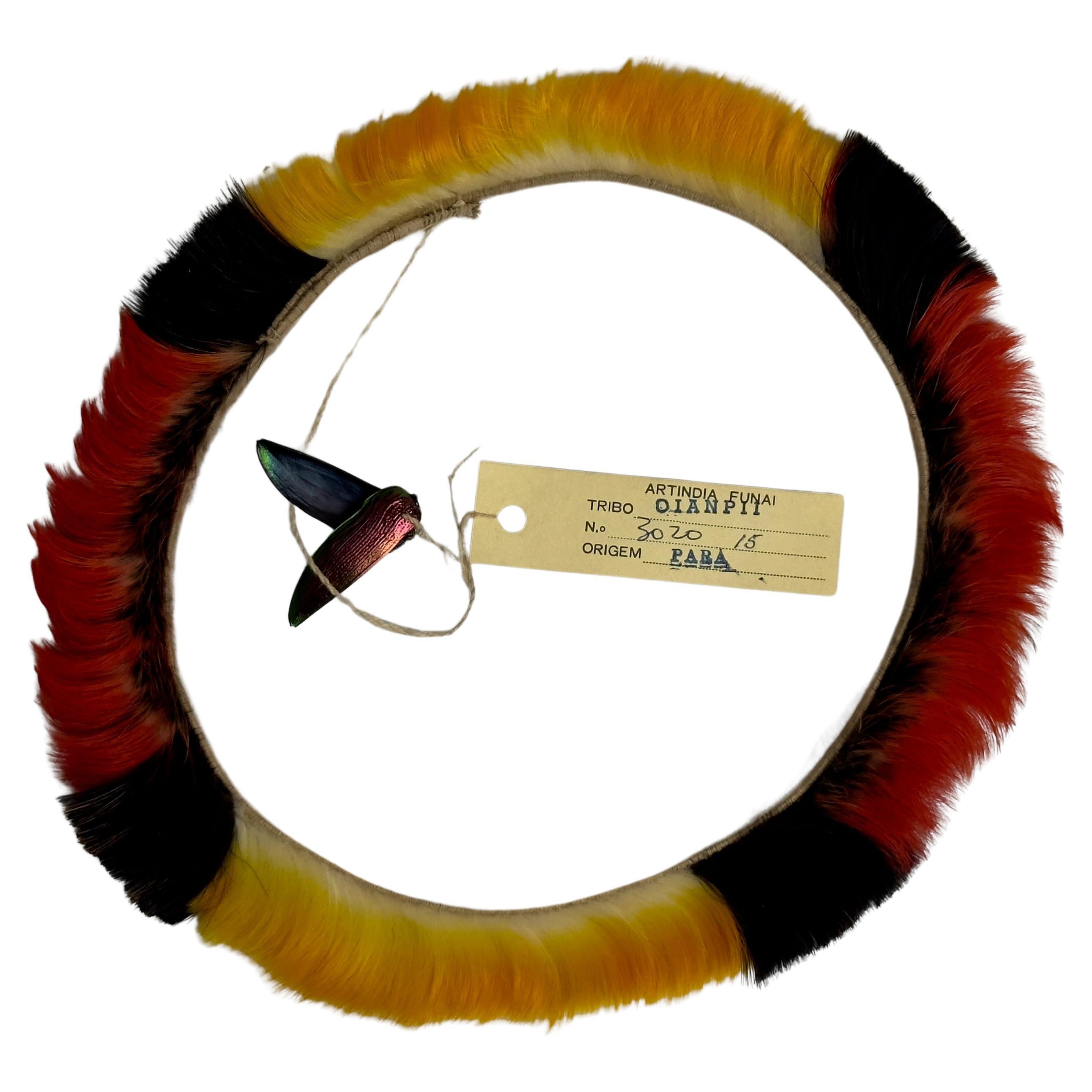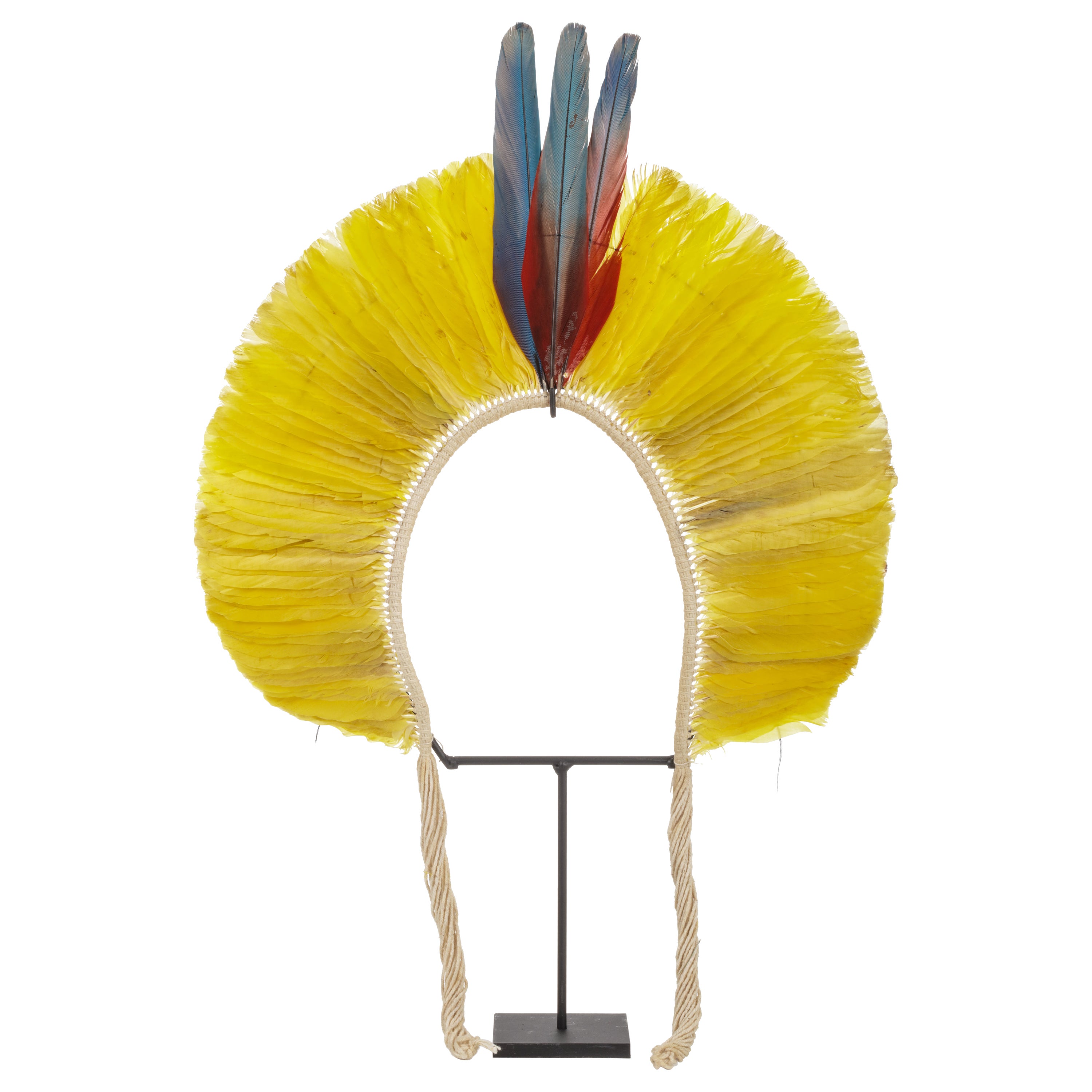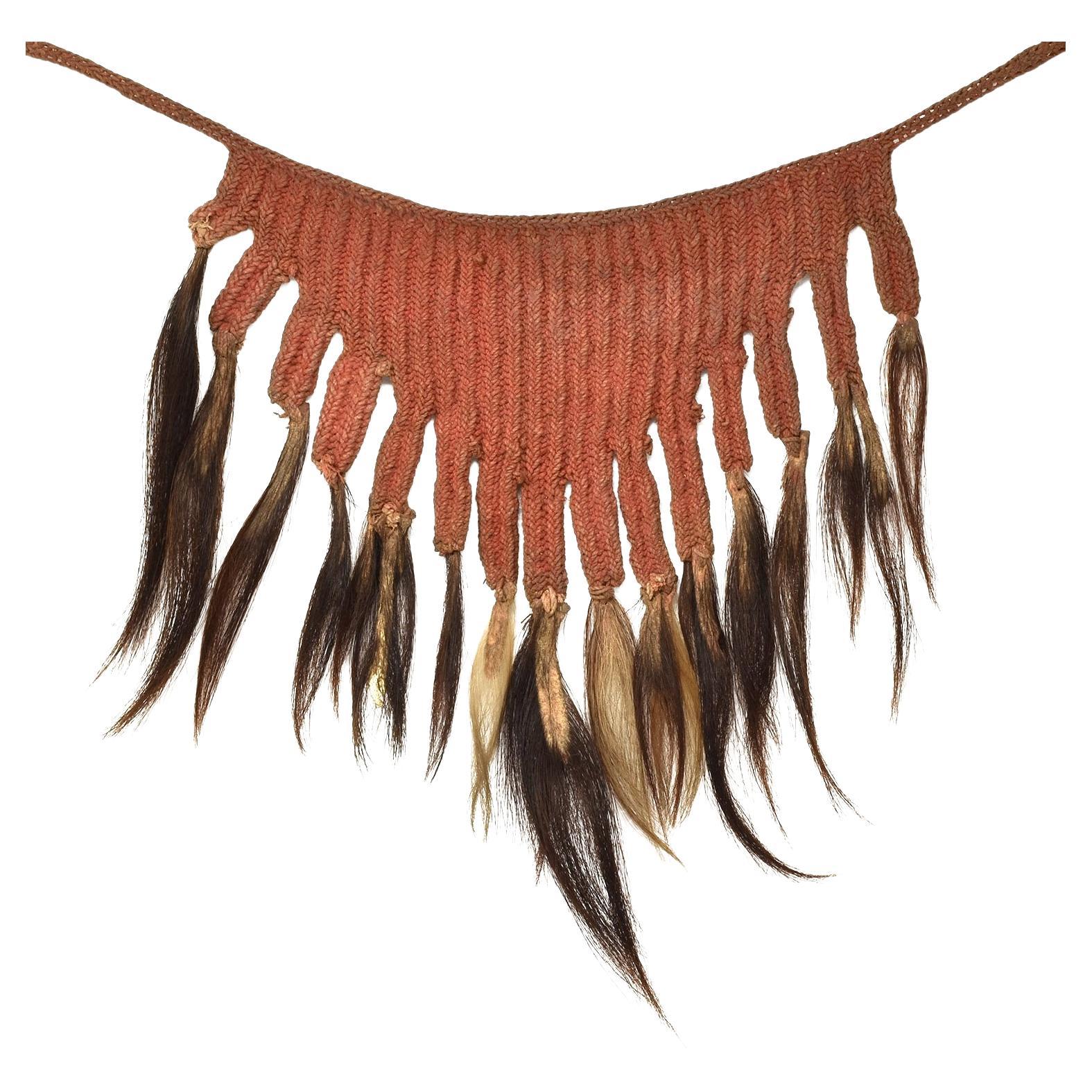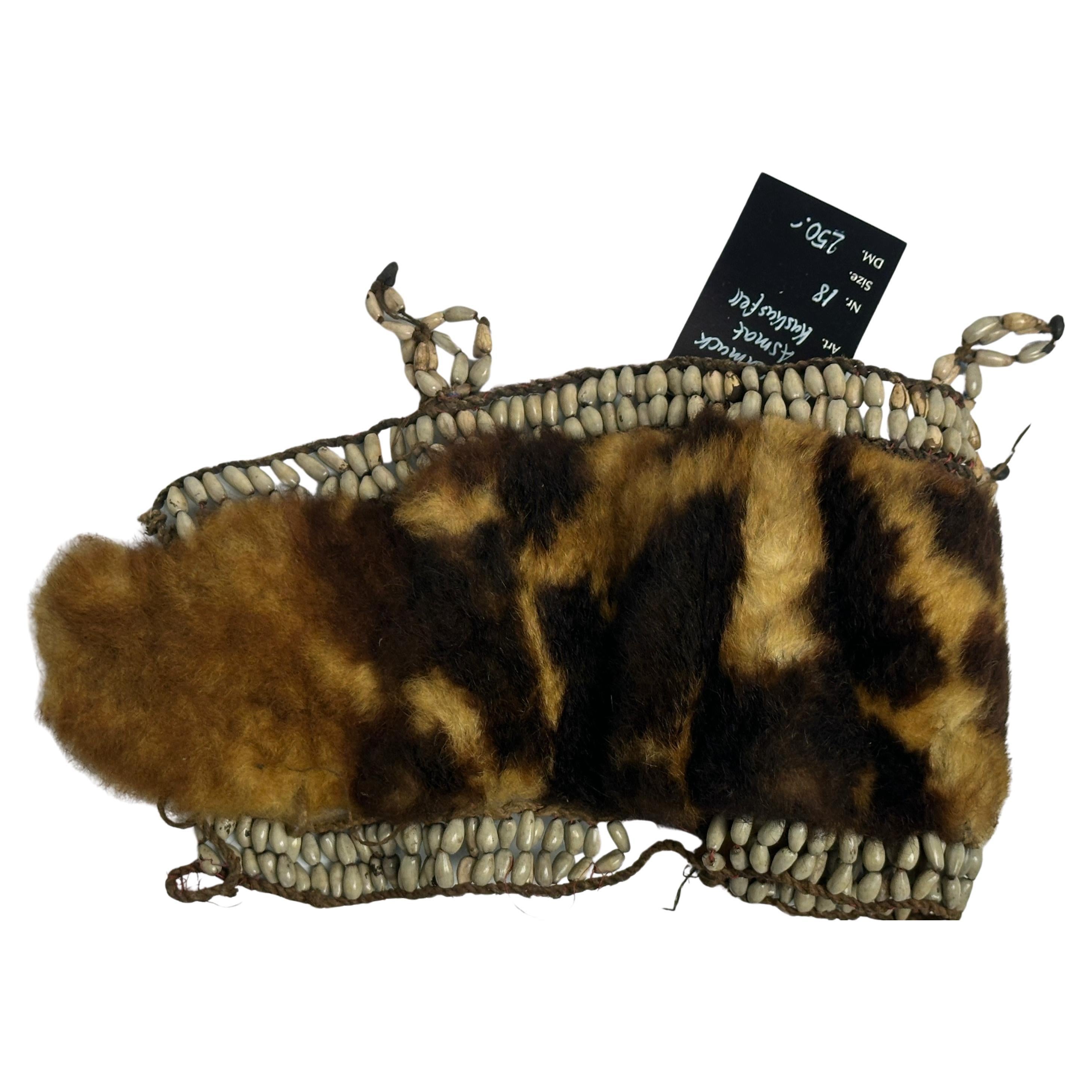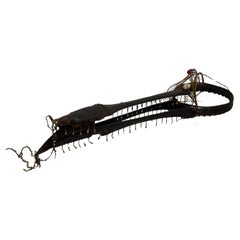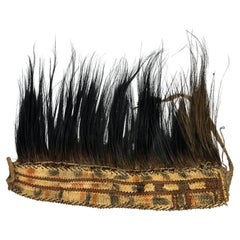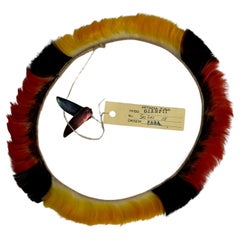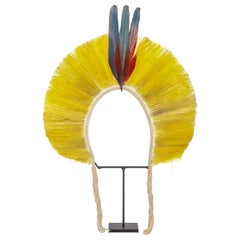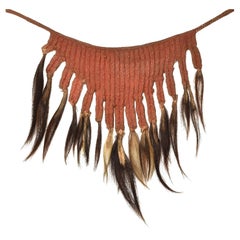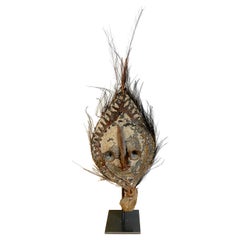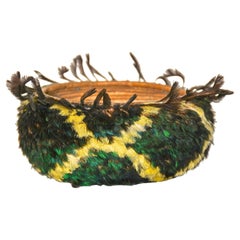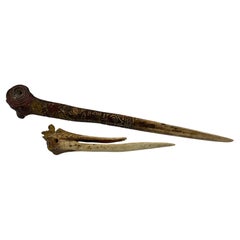Items Similar to Cassowary feather Bilum bag from Papua
Video Loading
Want more images or videos?
Request additional images or videos from the seller
1 of 4
Cassowary feather Bilum bag from Papua
$649.97
£472.85
€540
CA$887.02
A$987.78
CHF 514.08
MX$12,179.18
NOK 6,547.25
SEK 6,153.78
DKK 4,109.65
Shipping
Retrieving quote...The 1stDibs Promise:
Authenticity Guarantee,
Money-Back Guarantee,
24-Hour Cancellation
About the Item
Papua New Guinea, early 20th century,
A Bilum bag from Papua New Guinea, crafted from bark fiber and adorned with cassowary feathers.
Provenance:
- Collection Rinck Hollnberger, Munich (purchased in the 1980s or 1990s)
- Dimensions:Height: 35.83 in (91 cm)Width: 15.75 in (40 cm)Depth: 0.4 in (1 cm)
- Materials and Techniques:
- Place of Origin:
- Period:
- Date of Manufacture:Early 20th century
- Condition:Wear consistent with age and use.
- Seller Location:Amsterdam, NL
- Reference Number:1stDibs: LU5458242178772
About the Seller
5.0
Recognized Seller
These prestigious sellers are industry leaders and represent the highest echelon for item quality and design.
Established in 1985
1stDibs seller since 2020
23 sales on 1stDibs
Typical response time: 2 hours
- ShippingRetrieving quote...Shipping from: Maastricht, Netherlands
- Return Policy
Authenticity Guarantee
In the unlikely event there’s an issue with an item’s authenticity, contact us within 1 year for a full refund. DetailsMoney-Back Guarantee
If your item is not as described, is damaged in transit, or does not arrive, contact us within 7 days for a full refund. Details24-Hour Cancellation
You have a 24-hour grace period in which to reconsider your purchase, with no questions asked.Vetted Professional Sellers
Our world-class sellers must adhere to strict standards for service and quality, maintaining the integrity of our listings.Price-Match Guarantee
If you find that a seller listed the same item for a lower price elsewhere, we’ll match it.Trusted Global Delivery
Our best-in-class carrier network provides specialized shipping options worldwide, including custom delivery.More From This Seller
View AllAn Illongot headdress
Located in Amsterdam, NL
Ifugao, Northern Philippines, 19th century
Decorated with different kinds of beadwork and the bill of a Kalaw bird (hornbill).
Historically, only those who had proven themselves th...
Category
Antique 19th Century Philippine Tribal Art
Materials
Shell, Natural Fiber, Wood, Beads
$2,888
An Asmat headdress decorated with cassowary feathers
Located in Amsterdam, NL
Asmat, Papua Province, Indonesia, Late 19th century
Provenance:
- Collection Rinck Hollnberger, Munich (purchased in the 1980s or 1990s)
Category
Antique Late 19th Century Indonesian Tribal Art
Materials
Natural Fiber, Feathers
An Achuar feather headring
Located in Amsterdam, NL
Achuar people, Perú, Amazon region, early 20th century
Category
Early 20th Century Peruvian Tribal Art
Materials
Natural Fiber, Feathers
An Amazon Indigenous Kayapo feather headdress
Located in Amsterdam, NL
Brazil, Pará or Mato Grosso, circa 1950’s-1960s
H. 55 x W. 38 cm (incl. stand)
Provenance:
Collection Rinck Hollnberger, Munich
(purchased in the 1980s)
Category
20th Century Brazilian Tribal Art
Materials
String, Feathers
An Asmat head ornament made from Cuscus fur
Located in Amsterdam, NL
Asmat, Papua Province, Indonesia, Late 19th century
Made from a long piece of Cuscus fur decorated on the sides with shell beads and strings of natural fiber.
Provenance:
- Collec...
Category
Antique Late 19th Century Indonesian Tribal Art
Materials
Fur, Shell, Natural Fiber
A bridal headdress from Papua called 'ambusap'
Located in Amsterdam, NL
Iatmul, Papua New Guinea, 20th century
This ceremonial headdress is traditionally worn by a young bride as she enters her new husband’s home for the first time. Adorned with shells—...
Category
Antique 19th Century Papua New Guinean Tribal Art
Materials
Shell, Natural Fiber
You May Also Like
Cache-Sexe Papua New Guinea
Located in Point Richmond, CA
Cache-Sexe Papua New Guinea
Culture, Papua New Guinea
Natural fibers, boar’s tails, and pigment
Mid 20th C.
Dimensions: 10 w x 12 h in./13.75 w ...
Category
Mid-20th Century Papua New Guinean Other Tribal Art
Materials
Natural Fiber
Papua New Guinea Talipun, Boiken, Sepik River Region
Located in West Palm Beach, FL
Papua New Guinea: Talipun, Boiken, Sepik River Region
Northern Papua New Guinea, 20th Century
A fine example of the rich cultural heritage of Papua New ...
Category
20th Century Papua New Guinean Tribal Tribal Art
Materials
Shell, Paint, Feathers, Wicker
$2,200 Sale Price
20% Off
Pomo Coiled and Feather Basket
Located in Los Angeles, CA
Pomo Tribal Group
Northwestern California
1910 - 1920
Willow, woven fibers, Mallard Duck feathers, Meadowlark feathers, and Quail topknot feathers.
California Indian baskets are often considered the best in North America, and Pomo baskets...
Category
Early 20th Century American Native American Native American Objects
Materials
Other
Antique Ethnic Artifact Sepik River Cassowary Bone from Papua New Guinea
Located in North Hollywood, CA
Antique Ethnic Artifact Sepik River Cassowary Bone from Papua New Guinea
For many groups in Papua New Guinea, bone was an important medium for making tools of all types. This artifact is made from leg bone of a cassowary, a large, flightless, and extremely dangerous, bird.
Cassowaries also play an important role in the mythology of groups in the Sepik River area.
Though no longer used these bone artifacts are still used ceremonially. They often play important roles in male initiation and other rituals. They are also worn as personal adornment by tucking them into a band of braided fibers worn around the upper arm.
Antique Ethnic Bone Cassowary Artifact with minimal carving and incised design confined to the joint end.
A small hole has been drilled through from both sides of the top and presumably for the threading of a cord.
The bone has been partially divided near the top and to form two prongs that project down the back of the dagger possibly allowing the user to wear is tuck into a waist band or belt.
Origin Papua New Guinea Maprik Dist Area
From the Art Collection of Marian and John Scott, acquired in 1962.
Similar items are in display in the Timothy S. Y. Lam Museum of Anthropology.
Purchased from the amazing private collection of Mark Lissauer who spent his life collecting niche ethnographic pieces.
About Mark Lissauer:
Mark Lissauer spent forty years travelling abroad for months at a time collecting ethnographic artefacts primarily from New Guinea and the islands of the West Pacific, and from Asia and Himalayan countries. Fluent in five languages and having in the course of business travelled to more than forty countries, Mark is well-known to museums and art-collectors around the world for his long career and his interesting and diverse collection of rare ethnographic material.
Mark knows the origin and symbolism of each piece. Through extensive research and more than ninety trips around the globe, Mark familiarised himself with the traditions of the various cultures he visited in order to understand the meaning of each object to its region and tribe. His home has a specialist library and several rooms are filled with tribal carvings, textiles and ethnographica.
He acquired his first tribal piece in 1948 during a business trip to Milne Bay, New Guinea, and has since documented the acquisition of some 35,000 items. Several thousands of these have been sold to important private collections and museums worldwide, including the Rockefeller Museum, the British Museum and the Musée National des Arts d’Afrique et d’Océanie, now incorporated into the Louvre Museum.
Estimator certificate of authenticity by Wayne Heathcote Tribal Art Dealer and Expert.
Heathcote has a flash gallery in Brussels, where much of the tribal art business is centred, and is an expert at Sotheby's tribal art sale...
Category
Early 20th Century Folk Art Tribal Art
Materials
Bone
Tribal mask with feather head-decoration
Located in Munich, DE
Add a touch of culture with this striking tribal mask. Its intricate design and feather decor makes it a captivating decorative piece for any wall.
Category
Antique 19th Century Masks
Materials
Wood
Asmat Tribe Handled Drum New Guinea
Located in Bridgeport, CT
Sculptural Dance Drum hand-carved by the Asmat Tribe Papua, New Guinea. The fine Hourglass form Drum with handle on one side and flange on the other with traditional incised Mask d...
Category
Mid-20th Century Papua New Guinean Tribal Tribal Art
Materials
Wood
More Ways To Browse
Mountain Dining Chairs
Neon Lighting
Oval 19th Century French Mirror
Oval Gold Frame Mirror
Pair Of Leather Table Lamps
Pierre Jeanneret Chair Teak
Silk Sari
Solid Gold Armchair
Sterling Silver Handle Carving Set
Sun Medallion
Taxidermy Mounts
Teak Side Tables End Tables
Tubular Dining Table Glass
Turkish Silk Pillow
Urn Handled Table Lamp
Used Fluorescent Lighting
Vintage 1949 Wine
Vintage Clamp Lamp
